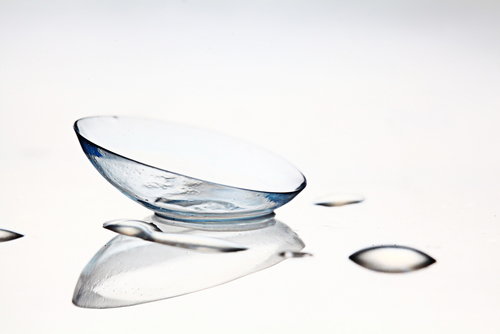
If you wear contacts, you may not be thinking about how they affect the environment. After all, contacts are made of plastic, but they’re small.
Maybe you even recycle the containers they come in and your used bottles of contact solution. How much of an impact can those tiny lenses have?
Unfortunately, contact lenses can actually cause a fair amount of environmental damage. Contacts may be small, but so many people use them.
Many contact lens users also dispose of their contacts down the drain. Putting contacts down the drain is where contacts do the most damage. Keep reading to learn why!
Microplastics
Most people know that plastic is bad for the environment. Plastic is an issue because it isn’t biodegradable. This means it takes a long, long time to break down and dissipate back into the environment.
When plastics do break down, they don’t really break down completely. Instead, they leave microplastics. Microplastics are tiny fragments that can be invisible to the naked eye.
Now, contacts are practically microplastics even before they break down. They’re small and when they dry out, they can be quite brittle and break easily.
This can pose a variety of problems when contacts end up disposed of in natural habitats. This is often where they end up the most.
From Soil to Waterways
The waste that you dispose of down the sink or toilet ends up in wastewater treatment. Wastewater treatment tanks are filled with microorganisms.
The microorganisms feed off waste to break down potentially harmful substances. The wastewater is then dumped into the soil.
Here’s the problem: wastewater only spends a few days in treatment. This isn’t enough time for certain materials to break down to any significant extent.
Researchers studying contacts in wastewater treatment tanks discovered that after the maximum amount of time allowed in treatment, contacts barely begin to break down at all. This means that they can end up fully intact when the wastewater is flushed out onto the soil.
Contacts either stay wet and whole beneath the soil or they dry out and break down into harmful microplastics. Either way, when it rains, contacts or contact fragments can be brought to the surface of the soil and run down into waterways. This is where they pose a threat.
Harm to Marine Life
Microplastics are as harmful to marine life as the plastic rings that strangle them. When fish or other wildlife feed and end up consuming microplastic particles, they can be tricked into feeling like they’re full.
This means they can starve to death, thinking that the food they’re eating is giving them nutrition. In reality, they’re just swallowing tiny pieces of plastic.
This isn’t even the full extent of the harm contacts can do. Since contacts are made from an absorbent material, when they sit in wastewater and soil, they absorb all kinds of harmful chemicals and pesticides.
These toxins can then infect any animal that consumes contact fragments and spread the toxin up the food chain. Contacts can cause damage to entire animal populations!
So what should you do? Don’t flush your contacts! Don’t lose them down the drain! Or, better yet, consider LASIK instead.
Want to find out if you’re a good candidate for LASIK? Schedule a LASIK consultation at Ellis Eye in San Francisco, CA today! Why not help the environment and achieve visual freedom at the same time?


